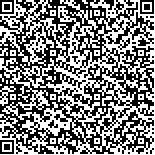下载中心
优秀审稿专家
优秀论文
相关链接
摘要

基于嫦娥一号数字高程模型(DEM)数据,利用地形信息参数来描述月表撞击坑的边缘轮廓特征,采用Hough变换检测方法提取了月表撞击坑。将该方法应用于克拉维乌斯(Klavius)撞击坑的周围区域,在DEM数据500 m空间分辨率下,不考虑退化严重的撞击坑时,检测百分比D=90%,分支系数B=0.30,质量百分比Q=71%,在考虑退化严重的撞击坑时,D=71%,B=0.30,Q=58%;研究表明该算法对没有退化或轻微退化的撞击坑有很好检测效果。与基于影像数据月表撞击坑自动检测的研究进行比较,本文给出的算法具有更高的检测精度,同时虚假检测较少。证明该方法用于月表撞击坑的自动检测是可行的。
Craters can be defined in terms of terrain attributes calculated from the Chang'E-1 (CE-1) Digital Elevation Model (DEM), and detected by using Hough Transform. We applied our method to the surrounding area of Klavius crater, and compared the results to the existing catalog of manually identified craters. The factors for our algorithm are: detection percentage (D)=71%, branching factor (B)=0.30 and quality percentage (Q)=58%. If we excluded the craters that our method is not capable of detecting then D=90%, B=0.30, and Q=71%. The performance of proposed DEM-based algorithm is better than image-based algorithm, especially the small number of false detections. The experiments demonstrate that the algorithm was able to detect the lunar craters from CE-1 DEM.

